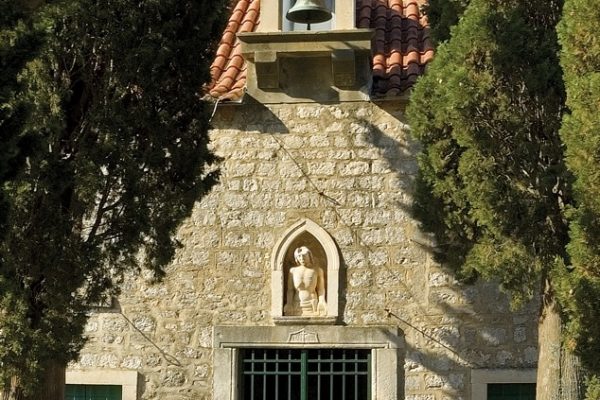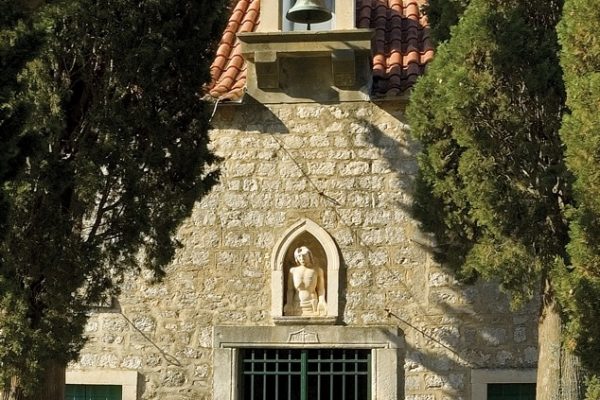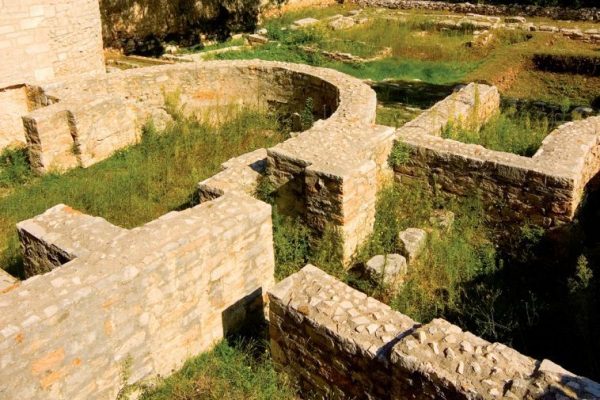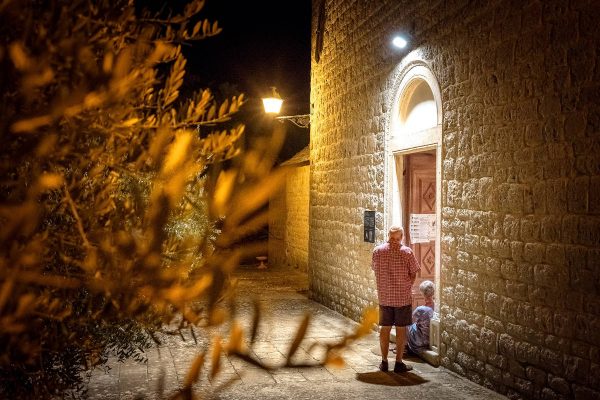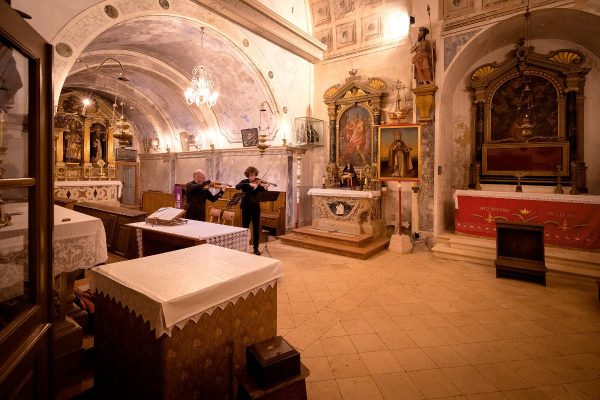Churches of Stari Grad
St. Stephen’s Church
St. Stephen’s Square, located in front of the parish church of the same name which was once Hvar Island’s first cathedral, is the most significant public space in Stari Grad. In the past, this is where verdicts were pronounced and deals were made and now, after the daily rhythms of the locals and guests have moved to the seafront, it has become an oasis of quiet and contemplation. The Church of St. Stephen is a baroque building whose construction began in 1605. The church was built by local craftsmen while the interior was decorated by Venetian artists. The bell tower dates from 1753 and, as indicated by the inscription above its entrance, its foundations and ground floor were built from stone blocks taken from the ancient city walls. The first loggia of the bell tower has a built-in stone relief of a Roman ship from the 2nd century, while the south part of the square holds one even more ancient monument – the winged Erot dating from the same period.
St. Rocco’s Church
In the immediate vicinity of Hektorović’s Tvrdalj lies the church of St. Rocco – the patron saint of Stari Grad. Every year, on August 16, a great procession and celebration are held in his honour. The church itself was built in the 16th century, with a bell gable added in 1783. During the construction of the stairs in the 19th century, a mosaic floor of the Roman baths was discovered, as indicated by the carved inscription. Opposite the church lies an entrance to the part of Tvrdalj which was, in Hektorović’s time, meant for the poor and the travelling.
St. John’s Church
The early Christian church of St. John, with figural mosaics, dating from the 5th / 6th century, has undergone numerous changes during the early Middle Ages, while its twin church – Curch of St. Mary – has been preserved only in its foundations. The remains of the ancient Pharos city walls from 4th century BC can be found in the church’s vicinity, as well as houses and streets from the same period.
St. Lucy’s Church
The church of St. Lucy is a remnant of a former Dominican Monastery burned by the Turks in 1571. A 15th century stone sculpture of Christ is located above the entrance door. Also preserved is the custom of burning a large bonfire in front of the church on St. Lucy’s Day (December 13) and giving the children presents hidden in a sock.
St. Nicholas’ Church
St. Nicholas’ Church, the church of the brotherhood of Stari Grad’s sailors and fisherman, was build in the 14th century and holds votive images and memories of survived shipwrecks. To this day, on St. Nicholas’ Day (December 6), an old boat is sacrificed in the fire in front of the church, trusting in his mercy as the patron of sailors. The church’s wooden gilded altar from 1612, work of Venetian wood carver Antonio Porri, is considered to be an exceptional work of art.
St. Jerome’s Church and the Ermitage
This small seaside church was built in 13th / 14th century, and in 1529 an oratorio for nuns of the Third Order of St. Dominic was added in the western part. The front of the church brandishes a rosetta with an opening in the shape of a four-leaf clover, a Roman relief of St. Jerome, and an inscription in Venetian dialect warning those about to enter to make peace with God and their loved ones. A contemporary art gallery has been operating in the church since 1976.
The Ermitage, a building opposite the church, was originally intented as accommodation for the hermit friars, the Glagolitic priests. During the 12th century it served as lodging for travellers (inner doors hold the inscription QVESTA CASA PER LI VIANDANTI), and after that as a lazarette for ships’ passengers suspected of contagious diseases. A restaurant of the same name has been in this building since 1966.



